Natural Pet Segment Continues to Grow
Alexandra Wepner //April 11, 2018//
“Anything you can do, I can do better,” is a familiar line from the classic song, “Anything You Can Do,” which has been covered countless times over the last 70+ years. Originally composed by Irving Berlin for “Annie Get Your Gun,” a 1946 Broadway musical, the phrase rings true when applied to the modern-day pet market: anything humans can buy, there’s likely a version for pets.
According to John Gibbons, also known as the Pet Business Professor, the humanization of pet foods is the latest phase in the evolution of customer expectations, starting with premiumization in 2003.
“Then came ‘Made in the USA’ because of the melamine recall, which was followed by ‘Natural,’” Gibbons wrote in a September 2017 blog post on www.PetBusinessProfessor.com. “Then in 2014, we got ‘Super Premium.’ What is next? The indication is ever-increasing humanization.”
A lot of the changes that have come about in the last decade can be traced back to the melamine recall of 2007. Over 10 years later, consumers are still cautious about the safety of the products to which they expose their pets.
“The humanization of pets is critical to market growth dynamics in relation to pet food safety concerns, which has helped drive sales of natural and super premium pet foods,” wrote David Sprinkle in a December 2017 article for www.PetIndustry.com. “Natural/alternative and super premium foods can give consumers greater confidence about the quality of ingredients and production processes. Packaged Facts survey data show that, for 69 percent of dog owners and 64 percent of cat owners, ‘fear of pet food contamination/product safety is a key consideration in the dog foods/cat foods [they] buy.’”
How It’s Made
Pet owners have a lot of expectations—probably more now than ever before. And out of these expectations come more questions for retailers about the products they’re selling. For instance, where do the ingredients or materials to make pet products come from?
“We source the lumber in various geographic locations, depending on where the project is,” said John Sarver, director of design and development at Gyms for Dogs, which produces dog exercise and play equipment in either natural wood or plastic. “The way our lumber [is treated]… it’s a pressure-treated kiln dried lumber, and it’s earth friendly, eco-friendly, and its expected life is probably 25 years.
“But plastic is a very good, earth-friendly option as well,” Sarver continued. “We don’t typically have a preference of wood over plastic. It’s more of the setting—where the equipment’s going—that dictates which material is better.”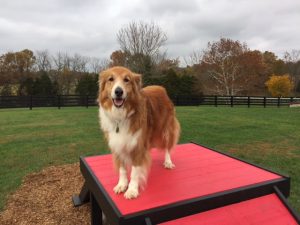
Sarver says that durability is one of the most important things to consider when building a play area for a park, doggie daycare or other pet business. Aside from the locally sourced natural wood option, the plastic Gyms for Dogs uses is made from recycled material and is also recyclable when the products are no longer in use at the end of their estimated 50-year lifespan. This is certainly good news, as a study published in the summer of 2017 in the peer-reviewed journal Science Advances found that, up to that point in time, 6.3 billion tons of plastic waste had been produced and the vast majority (approximately 79 percent) ended up in landfills.
In Sarver’s experience, pet owners are more engaged on walks and during outside play with their pets when they have access to equipment like that produced by Gyms for Dogs, and it helps dogs get the exercise they need whether at home or at a doggie daycare facility. However, eco-friendliness was always central to the company’s goal of helping pets and their owners keep a more active lifestyle.
“Two of the most important things for us when we got started in this business [were], number one, we wanted [the products] to be designed and sourced here in the United States,” Sarver said. “And two, we wanted to be as environmentally friendly as possible… Anytime we design a product or source a product, we always look locally and we always look to be as environmentally friendly as possible.”
The Natural/Organic Trend
Debbie Guardian, founder and president of Opie & Dixie, LLC, started her company with a similar mission in mind, setting out specifically to use “natural and USDA Certified Organic healing balms, grooming aids and non-dietary care solutions” for dogs and cats, as described on the company’s website. Within the United States, there are more than 26,000 certified organic farms or businesses listed on the USDA’s Organic Integrity Database.
“[Natural has] become a term that’s easy to toss around,” Guardian said. “I’ve seen products that do use chemically synthesized ingredients, and they may be natural to a degree, but I believe in pure, organic, from-nature natural and those are the kinds of products I use for myself.”
The Opie & Dixie website has a comprehensive list of ingredients used in its products, from almond oil and aloe vera to chamomile and oatmeal. One of the company’s most popular items is the Organic Snoutstik, available in coconut, pumpkin and lavender. It alleviates dry dog noses from exposure, allergies or heredity.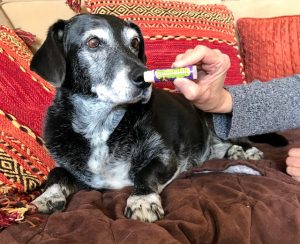
“We’re a relatively small company… and we like to manufacture in smaller batches, even though the balms are long-lasting,” Guardian explained, saying that the company still includes “best by” dates on its products because it’s a federal requirement. “We found ourselves being approached by foreign countries in Europe and the Far East… and because of where they are, they prefer to order in big bulk. That was actually a challenge, [but] a great challenge.”
However, Opie & Dixie continues to prioritize independent retailers, some of which are even local to Guardian, who is based in San Francisco, California. She says that, being a small business owner herself, she loves to support the “smaller, free-standing boutiques, mom-and-pop stores.” She also doesn’t foresee the shift to natural ingredients slowing down anytime soon, adding that she hopes it continues to spread for the sake of pets and the humans that love them.
Data indicate that Guardian’s prediction is a smart one: According to the Organic Trade Association, organic food sales in the United States have been climbing since at least 2007, peaking most recently in 2016, totaling approximately $47 billion. A survey released by the USDA in 2016 named California as the far-and-away leader in organic sales when compared to other states.
“I imagine that other companies will eventually follow that route and, interestingly enough, I don’t really like to see any company as competitors. I just want to see companies doing the right thing,” she said, mentioning West Paw Design as one company whose products, including beds and toys, she lauds as trustworthy and says she buys for her own pets. “I’m just passionate about what we do—what we come up with.”
Beth Sommers, president and chief marketing officer of Pura Naturals Pet, agrees that there’s no slowing down the natural trend, especially when it comes to organic foods and supplies.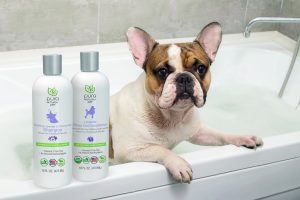
“Organic is the fastest growing sector of the U.S. food industry,” Sommers said. “Organic food sales increase by double digits annually. Customers that have adopted a healthier lifestyle with organic products will seek out organic food for their pets especially now that animals are considered a part of the family.”
Pura Naturals Pet is another company that produces a range of USDA Certified Organic pet products. Shampoos and conditioners, bedding, pet stairs, feeding sets and health and wellness products are all available from Pura Naturals Pet, and the company emphasizes the importance of obtaining organic certification.
“It’s important to realize there’s a big difference between ‘natural,’ ‘organic’ and ‘USDA Certified Organic,’” Sommers said. “USDA Certified Organic is regulated. To qualify, the product’s ingredients must contain absolutely no toxic pesticides, toxic synthetic herbicides, chemicals or NPK fertilizers. In the case of animal products, no antibiotics or growth hormones are allowed. It must be free of synthetic additives and dyes and must not be processed using industrial solvents.
“The manufacturing plant in which [the product] is produced must also pass a series of inspections conducted by the USDA certifying body that is also certifying your product,” she added. “This is an arduous process that takes months, if not years, to complete. It is an ongoing process that needs to be renewed yearly.”
A Lifestyle Change
A hefty amount of research goes into bringing a product idea to fruition, and that’s perhaps even truer when it comes to meeting the elevated standards of today’s market. For example, not only are there many levels of bureaucracy to navigate when obtaining organic certification, but compiling an ingredient list seems like an almost overwhelming task.
“We research all ingredients and work with the USDA,” Sommers said. “With our new Certified Organic Dental Solutions, we went beyond dental decay-fighting ingredients and added health-boosting oils and extracts.”
Pura Naturals Pet also uses olive leaf extract to soothe inflamed gums and support gastrointestinal health; sweet potato with vitamin A for healthy skin, coats, eyes and digestion; and cinnamon as an antimicrobial and for its anti-inflammatory properties and brain benefits.
In an interesting departure from a majority of the market, v-dog formulates its pet foods with only plants—primarily, peas. And while such diets might seem like a minority in today’s market, the same might not be true in coming years. As reported by Forbes, “the humble pea is revolutionizing the plant-based sector as global revenues of pea protein are estimated to be worth $104 million by 2026.”
In addition, sales of plant-based meat and dairy alternatives have been seeing significant growth around the world in human markets.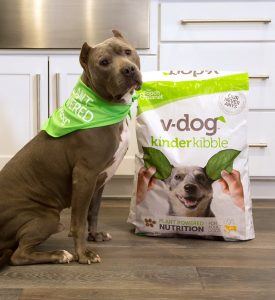
“We work with veterinary nutritionists and formulation experts and also just vets that we’re connected with to get their feedback and personal recommendations for things,” said Lindsay Rubin, manager of operations at v-dog. “I would say it’s a combination of working with a lot of different experts in the field who are vegan—and not vegan, so we get a good mix of perspective—and also we do lots of taste testing.”
v-dog is the producer of complete and balanced vegan pet food, founded in 2005 in California. The company’s primary product up until this point has been the Kinder Kibble, which is a pea-protein and 100 percent plant based dog food that meets AAFCO guidelines for adult dog nutrition, according to Rubin. It’s also available in a Mini Bites version, which is best for small dogs, old dogs or any dogs with chewing difficulty. The company also offers Breathbone Chews and Wiggle Biscuits (USDA Certified Organic) and is currently developing a vegan wet food for dogs as well as a new Wiggle Biscuits flavor.
“Peas are naturally high in protein and it’s an ingredient that is already available within the industry [and] pet food sourcing,” Rubin said. “It’s clean protein.”
While v-dog has been around for several years, vegan pet foods are still relatively new to the market. However, v-dog’s existence for over a decade is perhaps proof that vegan products resonate with consumers, who are increasingly concerned with both health and sustainability.
“If there’s a food that we can feed our dogs that they will thrive on and they will love and that requires no animals to be killed, why would we not choose this option?” Rubin said. “Since we’ve been doing this… we’ve never had any sort of health issues or recalls, [and] the dogs are not only healthy but they’re healthier than on their previous diets.
“Additionally, it’s also really important for our planet that we preserve our natural resources like land and water, and a plant-based diet… for dogs really reduces their carbon footprint—or, we call it a carbon paw print,” she added. “It uses less land and water and then additionally most animal lovers don’t like factory farming.”
From Farm to Bowl
All of Merrick’s dog and cat recipes and treats are considered natural since they don’t contain any artificial colors, flavors or preservatives. According to Tim Simonds, vice president of marketing at Merrick, every recipe has de-boned meat as its first ingredient, followed by “real, whole foods” cooked in the United States, never using ingredients from China.
“At Merrick, we’ve always believed that, like humans, dogs thrive on real, whole foods,” Simonds said. “Pet food made with natural ingredients provide our pets with the nutrients they need from quality protein, vegetables and fruits without artificial colors, flavors or preservatives. We want to provide our pets more of what they need and less of what they don’t.”
Merrick sources most of its ingredients from within the United States, save for a few products like lamb, which it imports from New Zealand. Merrick works with local farmers and purchases many ingredients from family farms in the United States.
“By purchasing those ingredients with fewer distributors and warehouses, we ensure they make their way from farm to bowl faster and fresher,” Simonds said.
Organix, produced under Merrick’s Castor & Pollux brand, is a USDA-Certified Organic pet food that’s also non-GMO project verified. It’s available in 10 recipes.
“Organix’s recipes offer nutrient-rich superfood blends, plus select ones also have nutritional benefits like probiotic and prebiotic fiber for healthy digestion in small breed dogs or Omega-3 fatty acids for healthy skin and fur,” Simonds said. “The number one ingredient in all Organix products is organic free-range chicken or turkey, which is produced without chemical pesticides, synthetic fertilizers, artificial preservatives, added growth hormones or antibiotics.”
The company’s latest product line is Pristine, which is a complete line of pet food made with responsibly sourced grass-fed beef and wild caught salmon. In conjunction with Guardian and Sommers, Simonds only sees expansion on the horizon for the natural segment.
“I think the natural trend will only get stronger in the coming years, especially as pets become increasingly viewed as part of the family,” he said. “Pet trends often mirror human trends, and just as consumers are becoming more aware of their own food choices, they’re applying the same thought and care to their pets’ food. Pet parents are looking for simple, safe ingredients that they can feel good about feeding their furry family members.
“In addition, consumers are caring more about how those ingredients are sourced or cared for before they make it to their pet’s bowl,” Simonds added. “We believe this interest in responsible sourcing will only get stronger in the years to come. Natural pet food and Merrick will continue to evolve to meet the demands of these savvy, health-conscious consumers.”
What about Waste
While consumers are asking more questions about where certain ingredients are sourced, they’re also concerned with the waste these products create and the impact on the earth their disposables will have.
“Consumers are also very aware of wastage, particularly with daily consumables like cat litter,” said Anneke Van Den Broek, owner, founder and CEO of Rufus & Coco, an Australian company that makes corn-based cat litter, among other pet supplies. “Choosing a high quality, absorbent litter like Rufus & Coco Wee Kitty Clumping Corn Litter gives an immediate reduction in wastage. Wee Kitty absorbs up to four times its weight in liquid—this is six times more absorbent than paper litter, and four times more absorbent than clay.”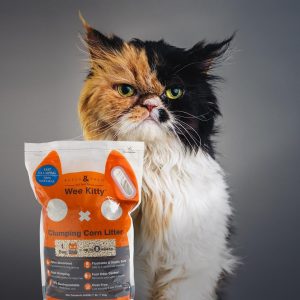
The Wee Kitty Clumping Corn Litter that Rufus & Coco produces is made from corn, vegetable starches and adhesives (also made from vegetables) that the company says offers “amazing absorbency and fast, effective clumping action once dampened.” It’s naturally biodegradable and flushable in small amounts, with a clumping mechanism, odor control and low dusting.
“Corn is really the perfect material for cat litter; not only is it natural and safe for use around your fur babies and human babies, but it also has amazing properties that enabled us to create the ultimate performance and an unbeatable list of features,” Van Der Broek said.
Increasingly, it seems pet owners are willing to part with a few extra dollars if it means better things for their pets and the planet. For many pet owners, even economic hardship has little influence over how they spend on their furry friends. In 2016, 73 percent of pet owners reported to the American Pet Products Association that the economy had no influence on their pet ownership.
“Educated pet parents understand that paying more for a better quality product is actually better value over time,” Van Der Broek explained. “Significantly paying more for a better quality product is actually better value over time, by significantly reducing the amount of litter required. The cost per day is lower for the customer, and it’s a lighter load for the planet to carry, too.
Of course, making such sales always comes down to retailers spending time with customers and making the effort to educate them.
“Retailers that take the time to educate their consumers and provide in-store demonstrations or sample packs to prove the benefits in person will provide pet parents with the efficient, environmentally friendly solutions they are searching for and secure loyal customers,” she concluded.



















